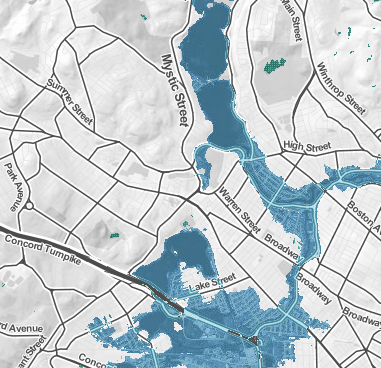by Anson Stewart
Some years back, I took a bus ride to a climate rally in New York City with a bunch of other activists. My seatmate was 12 years old, a smart kid from the suburbs who had never been to New York. As we approached Manhattan on the Cross Bronx Expressway, he looked out at a block of concrete apartment buildings and said something like: This is what happens when you don’t care about the environment. Actually, I replied, this is green living: People live close together; they can walk or take public transit; they live in apartments, share walls and heat and are relatively energy efficient; their carbon footprint is far lower than a family in a “green”, leafy single-family suburban house.
In the 1930’s the Home Owner’s Loan Corporation of America (HOLC) created actuarial maps of the United states. These maps were color coded — Green, Blue, Yellow, and Red — to reflect the amount of “risk” associated with home loans in those areas. The colors corresponded to “Best” (green), “Still Desirable” (blue), “Definitely Declining” (yellow), and “Hazardous” (red). Being in a green area made you likely to secure a federally-insured home mortgage, something that was effectively unavailable to red areas. Red areas were often associated with black populations, and these maps are where the term “redlining” comes from.
(Contributed by Ben Rudick and Steve Revilak)
Climate Central’s Surging Seas global Risk Zone Map provides the ability to explore inundation risk up to 30 meters across the world’s coastlines as well as local sea level rise projections at over 1,000 tide gauges on 6 continents.
Prof. Christophe Reinhardt runs the MIT Sustainable Design Lab. On Nov. 25, 2019 he gave a very interesting presentation, including talk and slides, that shows a pathway to make more housing, all kinds of housing, and greater housing density both more palatable in Arlington, and actually desirable. He also stressed the importance of paying attention to housing now in order to meet the climate change challenge. Charts (starting about 10 min in) show how drastically we need to reduce our carbon footprint to reach net zero by 2050. Buildings today account for about 40% of our carbon emissions world wide. What we build today will likely be around through 2050.
